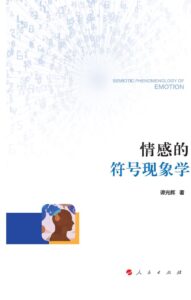
Guanghui Tan
Chengdu: Sichuan University Press, 2021
Reviewed by Chen Xue, University of Electronic Science & Technology of China
Emotions of human beings, so significant and so shared, are the most incomprehensible of all. How to solve the mystery of life? How to analyze this seemingly uncomplicated meaning? Many great philosophers hope to solve the mystery of emotion, and eventually get entangled. Guanghui Tan’s Semiotic Phenomenology of Emotion presents the views of the great masters on emotion in the history of eastern and western thought, from the pre-Qin philosophers to the Greek sages, all the way to Husserl, Scheler, Heidegger, Dufrenne and etc.
By adopting the methods of semiotic phenomenology, the book elaborates pivotal elements of human emotion, as textual features, syntagmatic modes, signifying mechanisms, functions of emotions and values of emotions, etc. Emotion is the ability of the human mind to evolve to ensure the survival and development of the human being, which acts as a reaction to responses and judgments of the mind. The clarification of emotional intentionality, emotional intuition, emotional apperception and emotional experience, emotional logic, emotional stratification, emotional intersubjectivity and other issues would construct imperative communication channels between mind and narration. Pleasure and pain are the ways of connecting the body with the world, and narrating pleasure and pain are the ways of connecting the mind with the world through the narration, which lay the foundation for the acquisition of a sense of existence, and it is the sense of existence which generates the emergence of emotion initially.
This book not only expounds the basic rules of emotion theoretically, but also clarifies emotion categories and the related issues of emotional communication in giving categories, which both significantly enrich the outputs of current emotion studies. Based on the sense of existence, this book divides emotional subject and object into “being” mode and “doing” mode, the connection types of emotional subject and object can be distinguished as “positive” mode and “negative” mode. As a result, 8 basic emotions, as joy, sorrow, desire, fear, love, evil, grace, hatred are sorted out, 24 kinds of complex emotions are produced through the reciprocal combinations of the 8 basic emotions, the combination modes and functions of each emotion are expounded and analyzed respectively and thoroughly in this book. More complex emotions, such as shyness, shame, humor, happiness, aesthetic feelings, beliefs and so on, can also be obtained through the method of complex emotion analysis and are included and probed into in this book as well.
Additionally, Tan also discusses many aspects of emotional communication, such as meta-emotion, additional emotion codes, fictional emotion, the relationship between style, rhetoric and emotion, ruthlessness, gossip and emotional communication, emotional virus and immunity, and possible emotion. To be more comprehensive, the author contributes new approaches to explore the simulative feelings of artificial intelligence, and provides us with various everyday cases to understand emotions, control emotions, and solve the problem of emotions may cause.
Tan’s book not only lays out the clear principle of semiotic phenomenology to solve emotional problems, but shows the operability of the principle with careful experiments of his own, which would profoundly inspire scholars when they deal with emotional problems. This is the fundamental reason why this book is worth reading carefully and worth recommending highly.
